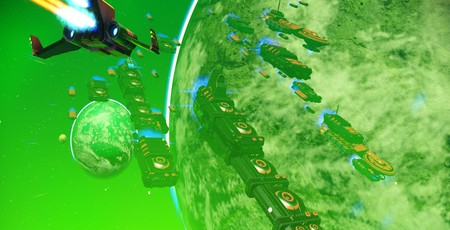
Since reviewing No Man’s Sky just under a year ago, I haven’t been back to Hello Games’ massively hyped and equally controversial space exploration game. There are good reasons for this – I’ve been swamped with games to cover in the interim and had the small matter of a baby daughter to look after. Oh, and the PS4 I was playing it on exploded, and all my save games went to the great hard drive in the sky. That didn’t help much.
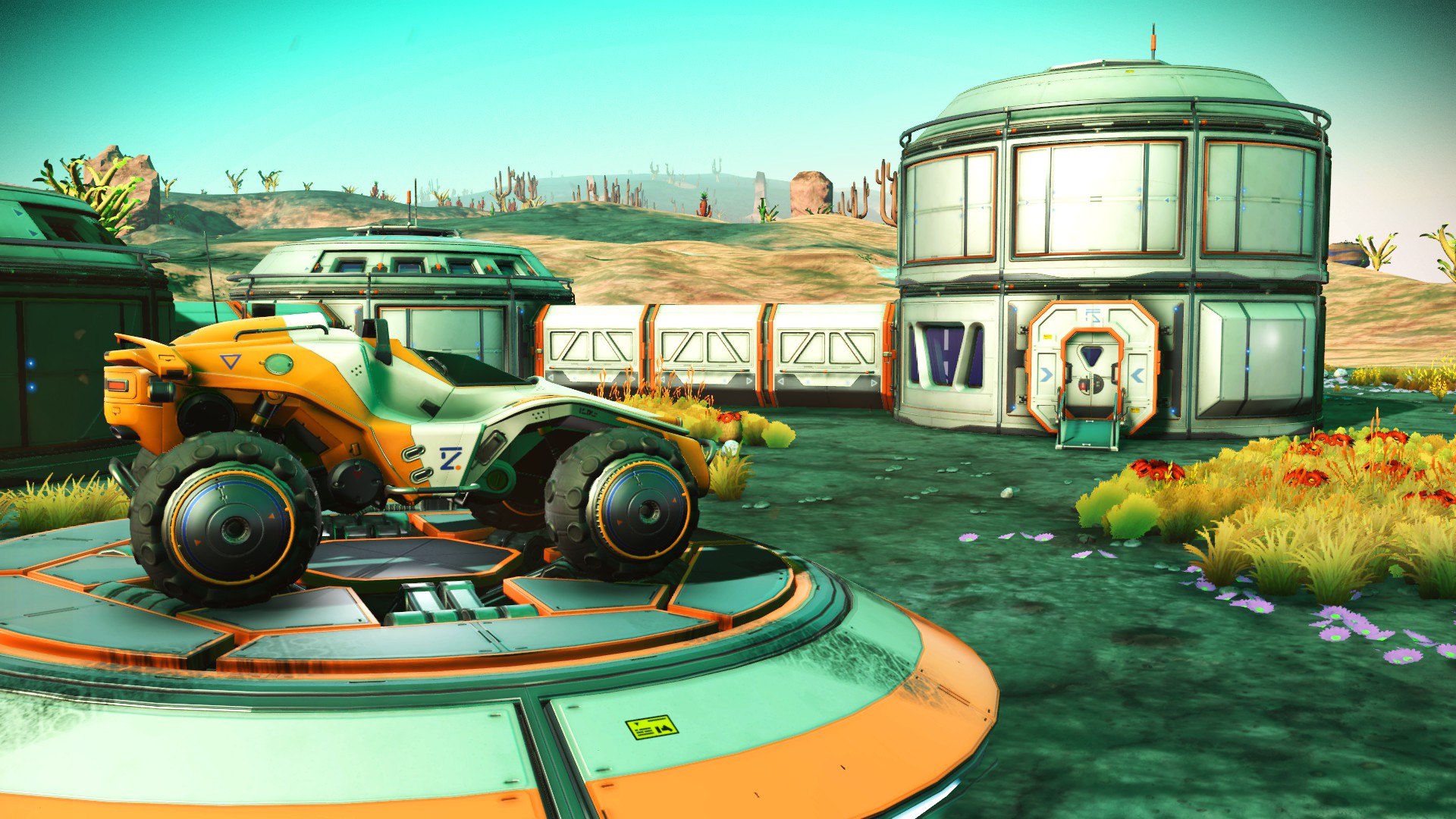 But I
haven’t thought about it much since
the time I spent with it last August either, and that’s a little more
discomforting. Looking at my review, I seemed to quite enjoy it. Sure, I had
problems with its overemphasis on crafting and the lack of dynamism to its
galaxy, but I also wrote paragraphs like this:
But I
haven’t thought about it much since
the time I spent with it last August either, and that’s a little more
discomforting. Looking at my review, I seemed to quite enjoy it. Sure, I had
problems with its overemphasis on crafting and the lack of dynamism to its
galaxy, but I also wrote paragraphs like this:
'Now No Man’s Sky is out, and having spent several days in its company, I can tell you precisely what kind of game it is. It’s that bit in a Bethesda game when you first step out of the starting dungeon and marvel at the environment around you – the rolling hills of Oblivion, the rugged mountains of Skyrim, the destroyed beauty of Fallout – repeated ad infinitum. No Man’s Sky is an endless cycle of that first, joyous half-hour of encountering a New Game World, running over the landscape, watching the virtual wildlife prance and caper, learning the rhythms of the simulated weather and climate, and delving into glistening caves and haunting abandoned structures. Added to that is the knowledge that each one of these moments is almost certainly just for you, your own personalised tour-guide of the stars.'
 Those aren’t
words you write about a game that’s forgettable. Neither do they stack up with
the astonishing amount of vitriol
Hello Games has received from various corners of the community in the last
12 months. On Steam, for example. No Man’s Sky has received over 74,000
reviews which amount to a 'Mostly Negative' rating. That’s just silly. No Man’s Sky certainly has its
issues, and some of them are quite substantial, but it was never that bad.
Those aren’t
words you write about a game that’s forgettable. Neither do they stack up with
the astonishing amount of vitriol
Hello Games has received from various corners of the community in the last
12 months. On Steam, for example. No Man’s Sky has received over 74,000
reviews which amount to a 'Mostly Negative' rating. That’s just silly. No Man’s Sky certainly has its
issues, and some of them are quite substantial, but it was never that bad.
There are people who seem to go out of their way to hate No Man’s Sky, who actively enjoy fanning the flames and do so under the guise of moral righteousness. Consequently, lately I’ve felt a pull to go back to it, bolstered by the impending anniversary of its release and the knowledge that Hello Games has made some significant additions over the last 12 months. Base-building, vehicles, purchasable freighters – these are some meaty new features, and I was intrigued to see how they fit with the game’s planet-hopping play.
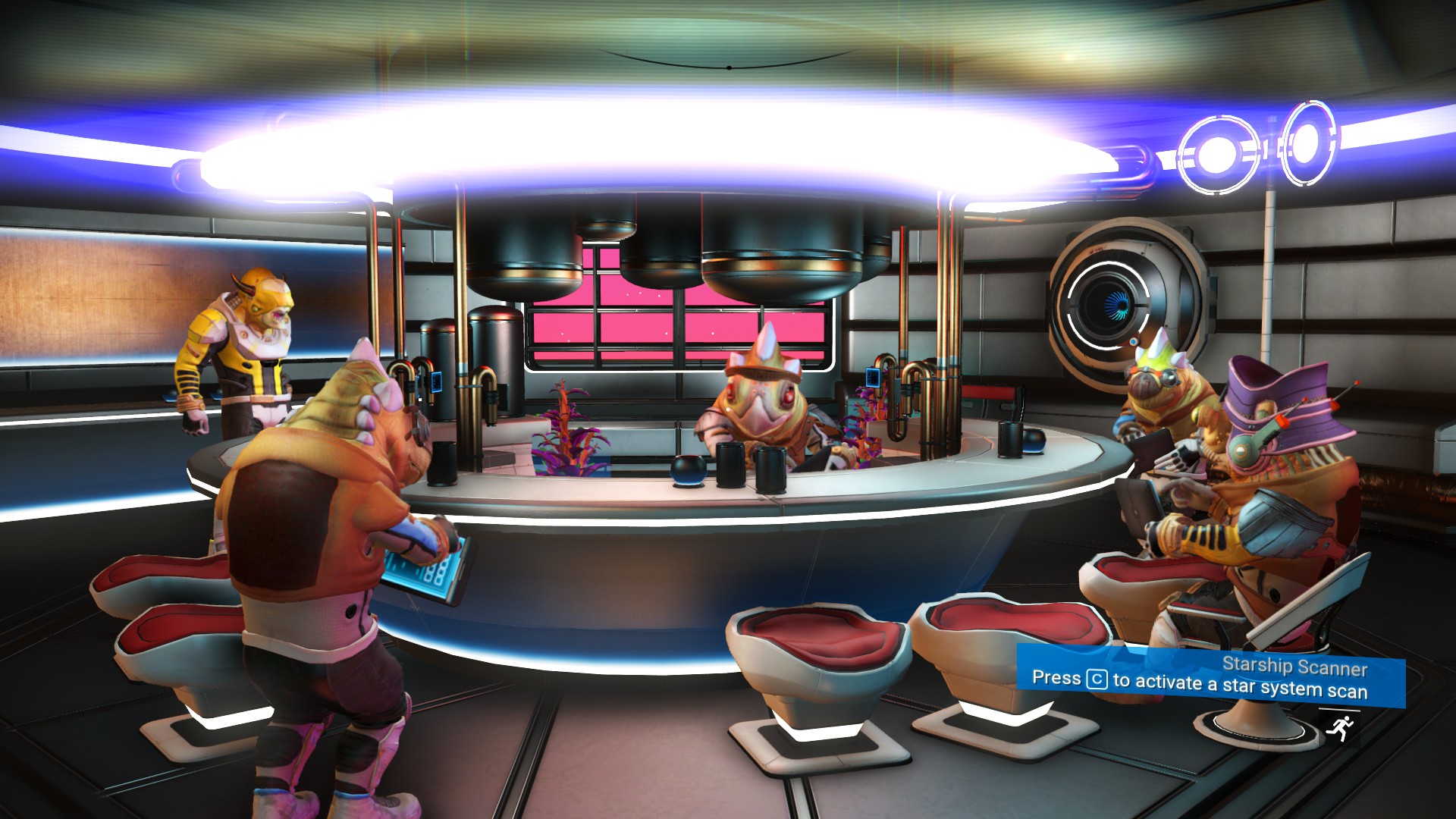 So I picked
up the PC version of No Man’s Sky in the recent Steam sale and have spent the
past couple of days exploring the game anew. Intriguingly, my experience was
just as unpredictable as it was the first time around. The new features are by
and large well implemented and a lot of fun to play with, but they don’t solve
the bigger problems No Man’s Sky suffered from, and in some areas they actually
exacerbate them.
So I picked
up the PC version of No Man’s Sky in the recent Steam sale and have spent the
past couple of days exploring the game anew. Intriguingly, my experience was
just as unpredictable as it was the first time around. The new features are by
and large well implemented and a lot of fun to play with, but they don’t solve
the bigger problems No Man’s Sky suffered from, and in some areas they actually
exacerbate them.
The changes made to No Man’s Sky are immediately apparent. Before you’ve even started the game, in fact. Whereas at launch NMS was a one-size-fits-all experience, it now offers a range of playstyles to cater to different people. These range from 'Creative', which basically lets you fly around and build structures without needing to worry about collecting resources, to 'Permadeath', which places itself at the complete other end of the difficulty spectrum. I opted for 'Normal', because I wanted to know how No Man’s Sky had changed in its vanilla form, but I felt I should point out these new modes exist in case you already played the game and found it too easy/hard.
 The first
hour or two of No Man’s Sky is roughly the same as before. You wake up on a
random planet with a damaged ship that needs repairing, and gradually upgrade your vessel until it has the ability to leave the system entirely. These
opening hours lose little of their wonder second time around. I found myself
just as enthralled by the game’s richly coloured, procedurally generated
landscapes. Admittedly, my first planet was pretty horrible, a garish pink and
green radioactive hellsphere that made me think of a mutant Mr Blobby.
The first
hour or two of No Man’s Sky is roughly the same as before. You wake up on a
random planet with a damaged ship that needs repairing, and gradually upgrade your vessel until it has the ability to leave the system entirely. These
opening hours lose little of their wonder second time around. I found myself
just as enthralled by the game’s richly coloured, procedurally generated
landscapes. Admittedly, my first planet was pretty horrible, a garish pink and
green radioactive hellsphere that made me think of a mutant Mr Blobby.
Later worlds, however, were much more exciting, including an eerily beautiful Moon with weird plantlife and corrosive rainstorms and a kaleidoscopic grassland populated by gigantic alien dinosaurs. The procedural algorithms appear to have been tweaked to improve the look of both landscapes and creatures. Terrain undulates in a more convincing fashion now, with more perceptible differences between plains and mountain ranges, grasslands and gorges. Alien wildlife looks a little more natural too, although an algorithm trying to simulate weird-looking creatures is always going to produce some results that just look wrong.
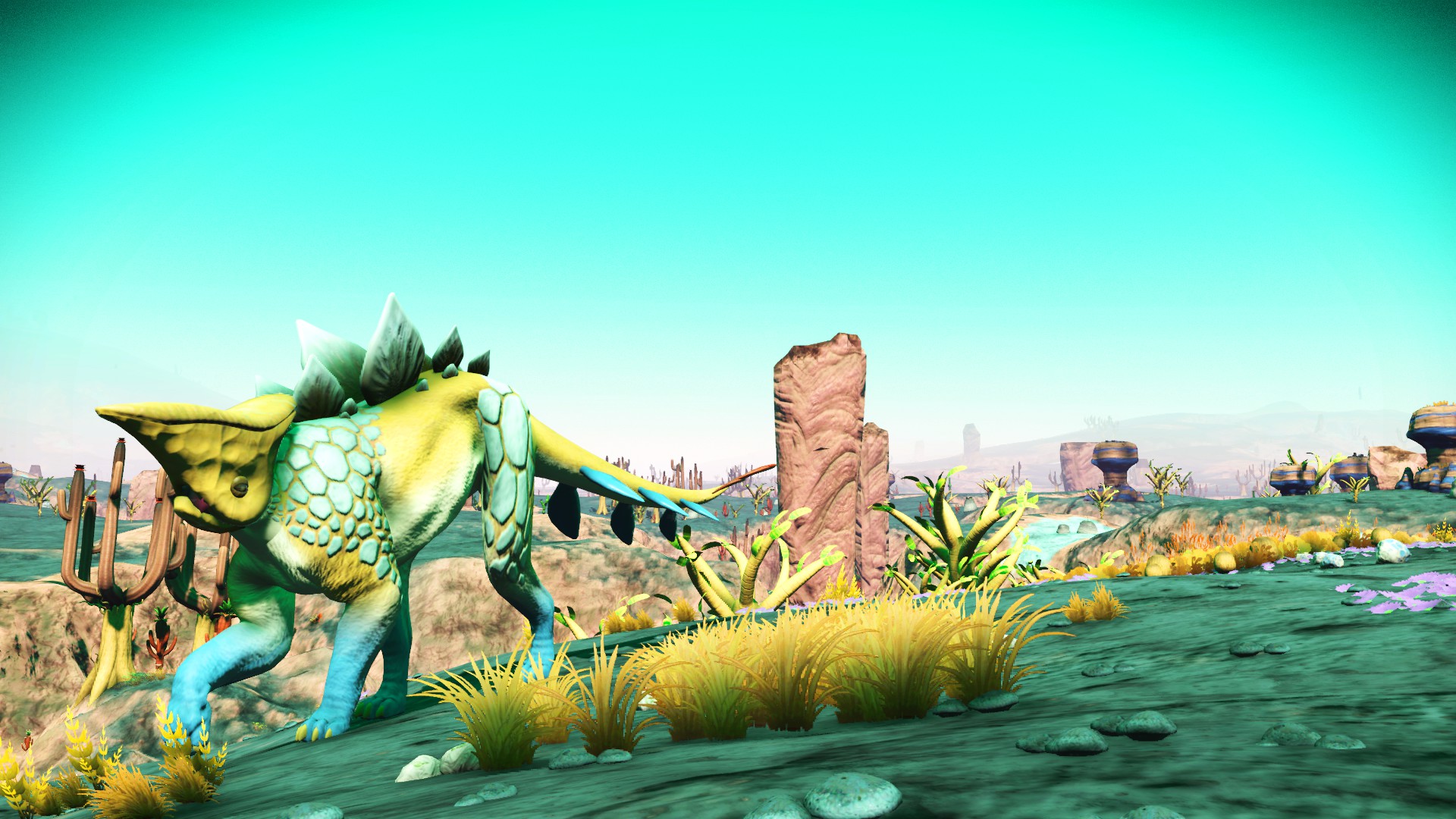 It isn’t until
a few hours in where the bigger changes begin to reveal themselves. Perhaps the
most substantial addition is the ability to construct your own bases and
establish a “home” planet for yourself. I should emphasise that you can’t build
a base just anywhere, only at designated
points on particular planets. The game does a poor job of explaining this as
well. Like quite a few things in No Man’s Sky, you must wait for the game to unlock this feature as you travel around before it can be used.
It isn’t until
a few hours in where the bigger changes begin to reveal themselves. Perhaps the
most substantial addition is the ability to construct your own bases and
establish a “home” planet for yourself. I should emphasise that you can’t build
a base just anywhere, only at designated
points on particular planets. The game does a poor job of explaining this as
well. Like quite a few things in No Man’s Sky, you must wait for the game to unlock this feature as you travel around before it can be used.
Once you find a suitable spot, though, the act of base-building is a lot of fun. I’m not really into the crafting and construction side of survival games, but the system Hello Games has developed is so simple and fun to play with that it’s hard not to be sucked into it. You can sketch out a basic layout in minutes, and that includes gathering the few materials you need to build the starting components. Compared to, say, the system developed by Bethesda for Fallout 4, it is more intuitive and efficient by several orders of magnitude.
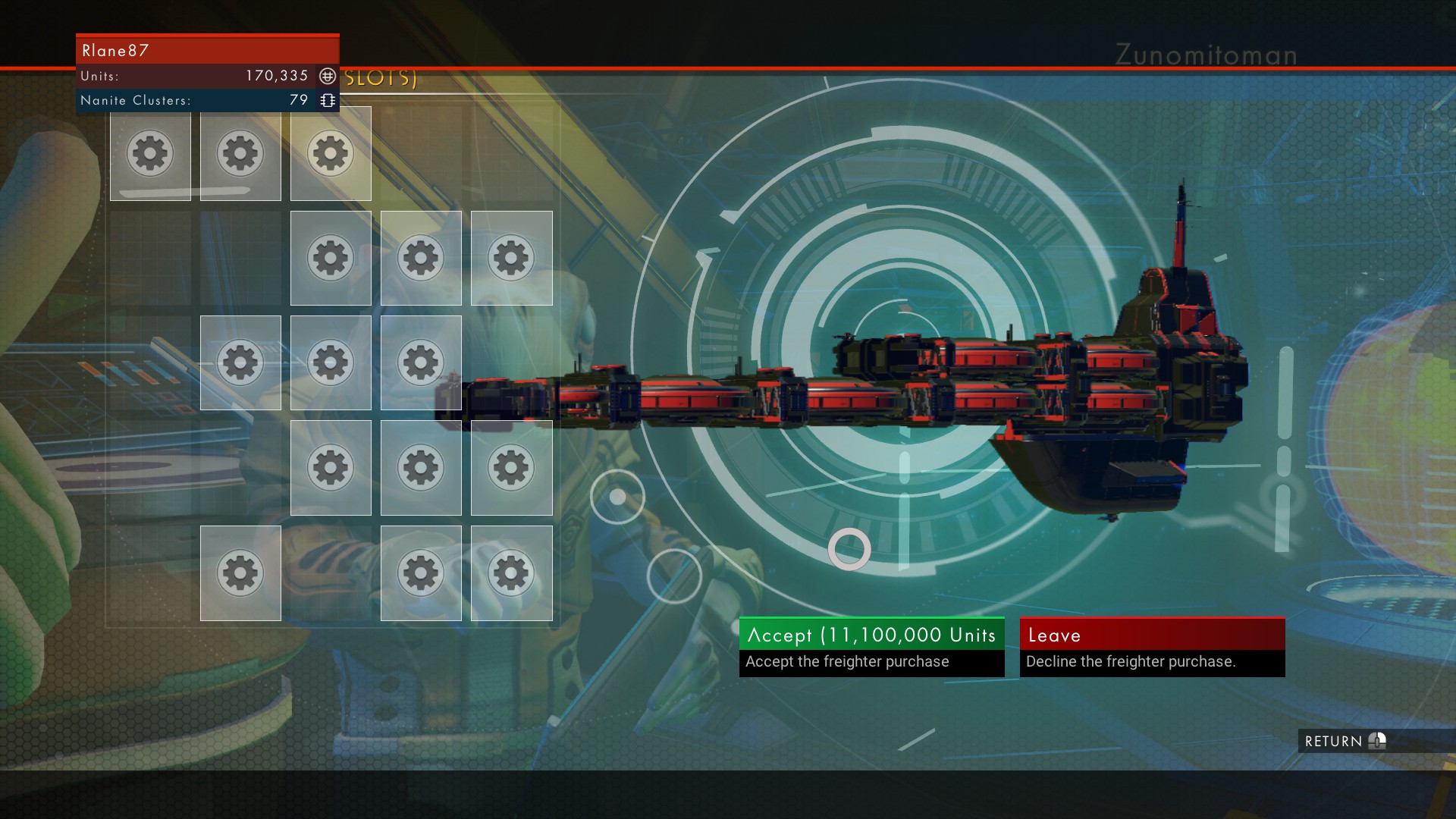 Expanding
and outfitting your base is somewhat more involved. You can hire aliens who
specialise in construction and science research from space stations, which
unlocks further components and upgrades for your base. From here you can build
a hydroponics biome and farm plants and even construct automated resource-harvesters
to provide you with a constant stream of important materials. There’s even a
simple quest structure which guides you through the establishment of each
element of your base.
Expanding
and outfitting your base is somewhat more involved. You can hire aliens who
specialise in construction and science research from space stations, which
unlocks further components and upgrades for your base. From here you can build
a hydroponics biome and farm plants and even construct automated resource-harvesters
to provide you with a constant stream of important materials. There’s even a
simple quest structure which guides you through the establishment of each
element of your base.
Although I was sceptical of the Foundation update when it was first announced, it works as a surprisingly effective skeleton for many of the systems to hang off. In addition, smaller mechanics like those resource harvesters engender a sense of progression, as they alleviate the grind of constantly having to look for iron and plutonium to keep your ship running. That said, in the short term they actually increase the grind because constructing the more advanced aspects of your base requires you to track down and collect a lot of different resources.
 There are
two other major alterations that Hello Games has made since the game’s launch.
The first is the introduction of planetary vehicles. Added via the Pathfinder
update, there are three types of 'Exocraft' -
a hovercraft, a rover buggy, and what is essentially a big space
truck. These can be unlocked by recruiting a Technician to your base and are
intended to aid exploration and mining while on a planet. I like these vehicles
in theory, but I find they’re too slow for exploring compared to just hopping
around a planet in your ship, even though that costs you launch fuel. That
said, if you can upgrade one with a powerful mining laser, you can use it to collect
a lot of resources very quickly.
There are
two other major alterations that Hello Games has made since the game’s launch.
The first is the introduction of planetary vehicles. Added via the Pathfinder
update, there are three types of 'Exocraft' -
a hovercraft, a rover buggy, and what is essentially a big space
truck. These can be unlocked by recruiting a Technician to your base and are
intended to aid exploration and mining while on a planet. I like these vehicles
in theory, but I find they’re too slow for exploring compared to just hopping
around a planet in your ship, even though that costs you launch fuel. That
said, if you can upgrade one with a powerful mining laser, you can use it to collect
a lot of resources very quickly.
The other major addition are Freighter ships, and these are very exciting. Freighters are basically flyable versions of the huge ships you see gliding between planets, usually as part of fleets. Freighters are able to transport a massive amount of cargo and can even act as a mobile base, which, unlike the terrestrial bases, fits No Man’s Sky’s nomadic play like a huge metal space glove. Oh, and as of the Pathfinder update, you can use them to buy and store multiple, smaller ships. So you can travel between systems in your freighter and then hop into a smaller ship to explore within the system, which is really cool. The only problem is that freighters are incredibly expensive, so you’ll need to do a lot of trading before you can afford one.
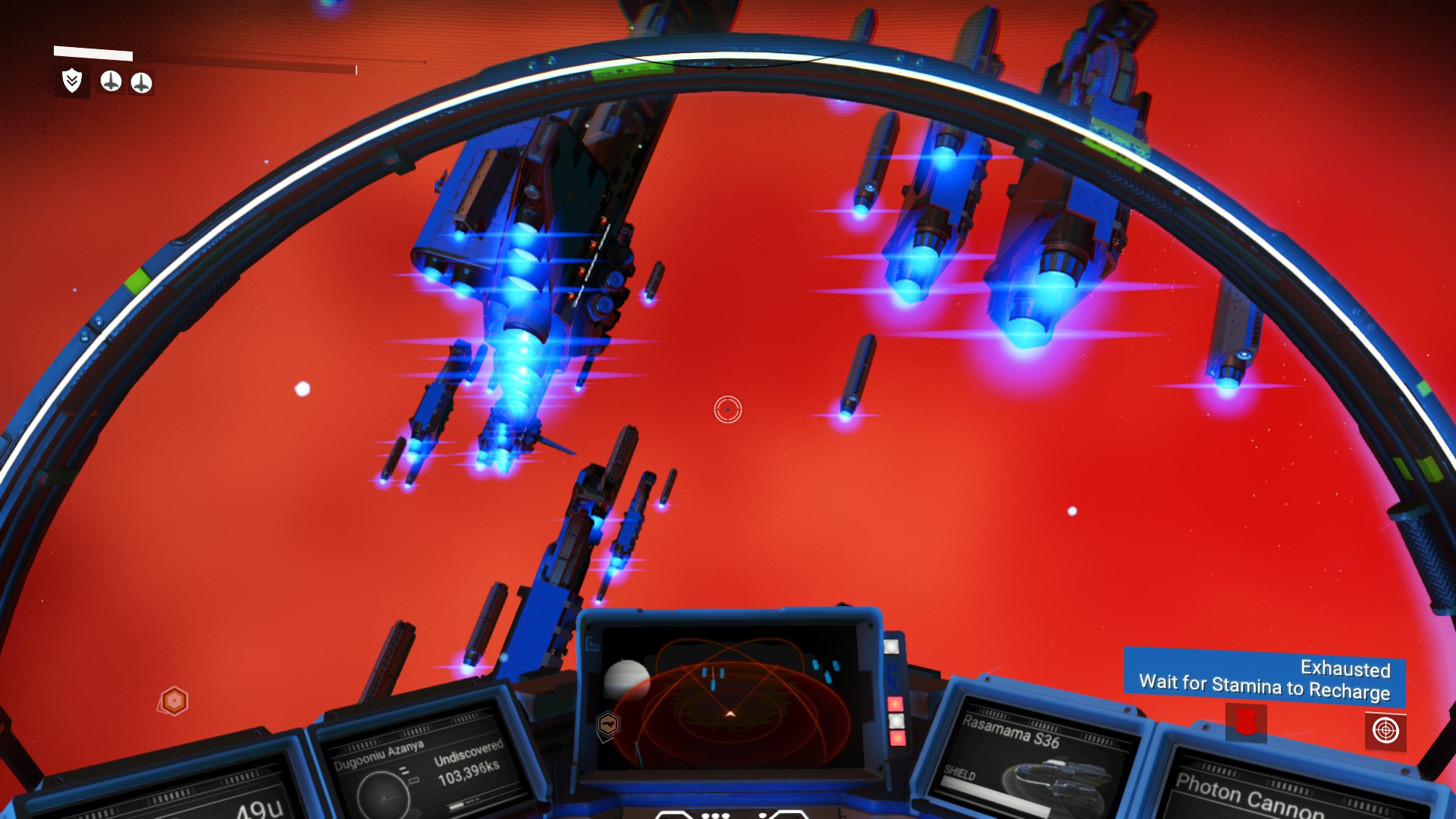 In fact, everything
in No Man’s Sky seems to be more expensive since the update. I’m still using my
vanilla mining laser, because I’m yet to find one that doesn’t cost millions of credits to purchase. The
increased price of everything means that you need to spend more time earning
that cash, which along with the base-building and saving up for a freighter,
can turn the mid-game into one hell of a grind. This is what I meant by the
updates exacerbating some of No Man’s Sky’s already-existing problems.
In fact, everything
in No Man’s Sky seems to be more expensive since the update. I’m still using my
vanilla mining laser, because I’m yet to find one that doesn’t cost millions of credits to purchase. The
increased price of everything means that you need to spend more time earning
that cash, which along with the base-building and saving up for a freighter,
can turn the mid-game into one hell of a grind. This is what I meant by the
updates exacerbating some of No Man’s Sky’s already-existing problems.
Yet the biggest issue is that none of these update address No Man’s Sky’s central flaws, namely that exploration is still pretty repetitive at a systems level and that there’s no real simulation going on in terms of what the other races and factions are doing in the galaxy. Space combat still involves pirates attacking nondescript fleets of spaceships, while interacting with other races still has no bearing on the wider game other than what stuff you can buy from them. Hopefully these two sides of the game will be the focus on the next update, which is rumoured to launch around the time of the game’s first anniversary.
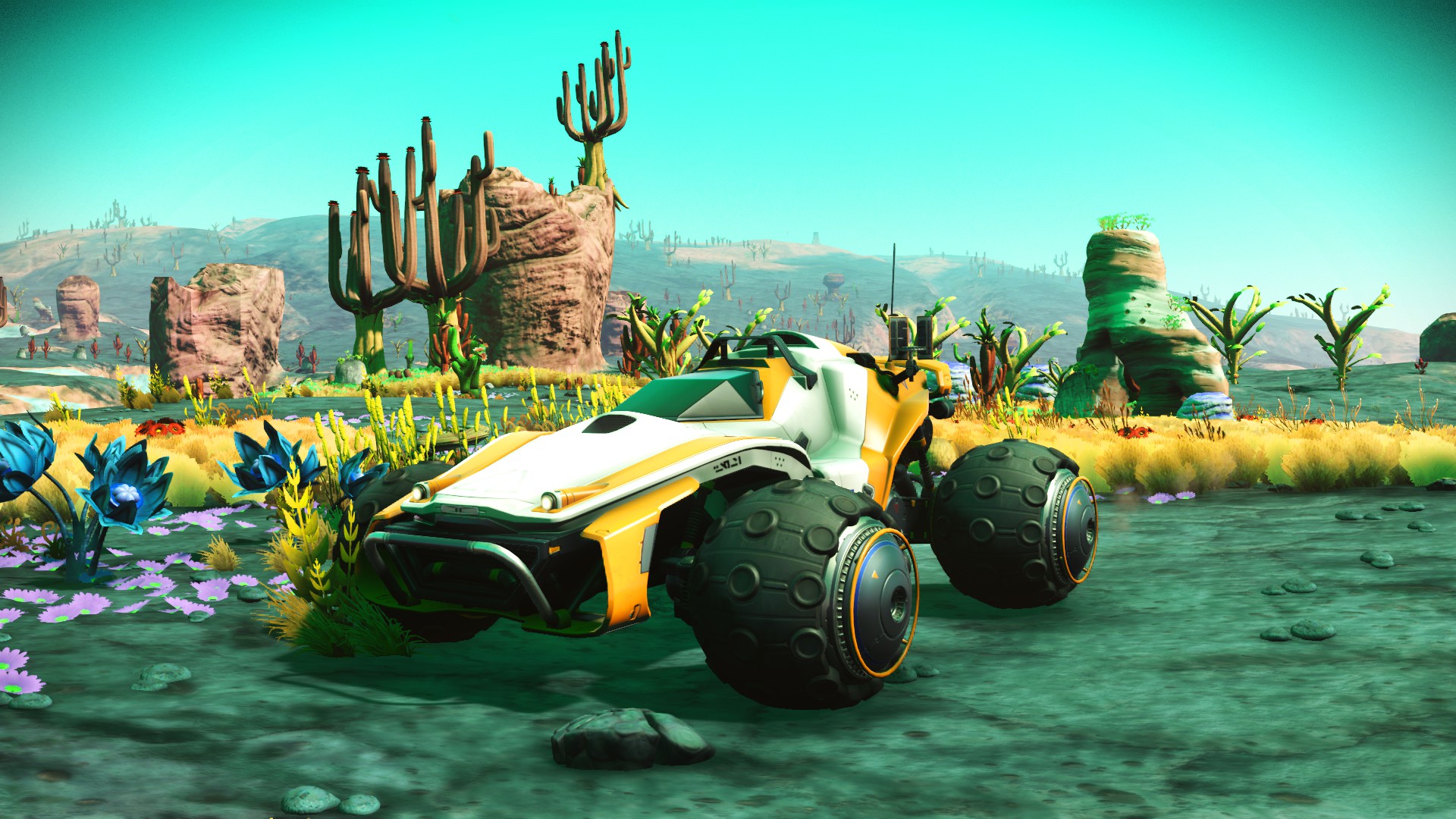 There is one
new feature that adds a surprising amount to exploration, and that’s photo
mode. No Man’s Sky has always been a highly photogenic game, and the photo mode
enables you to make the most of that, with the ability to fly the camera
independently and even adjust the location of the sun to change the lighting.
There’s a considerable amount of satisfaction to be had simply seeking out the
next photo-op.
There is one
new feature that adds a surprising amount to exploration, and that’s photo
mode. No Man’s Sky has always been a highly photogenic game, and the photo mode
enables you to make the most of that, with the ability to fly the camera
independently and even adjust the location of the sun to change the lighting.
There’s a considerable amount of satisfaction to be had simply seeking out the
next photo-op.
Ultimately, No Man’s Sky still isn’t quite the game I hoped it would be, but it is a better game than it was and by a considerable margin. The updates Hello Games has made add an impressive amount of depth and flexibility, although still not in the most important areas. Nevertheless, they demonstrate that Hello Games are committed to No Man’s Sky for the long-term, and if the developer continues to update the game in this fashion, then I think by this time next year No Man’s Sky could be something really special.

MSI MPG Velox 100R Chassis Review
October 14 2021 | 15:04



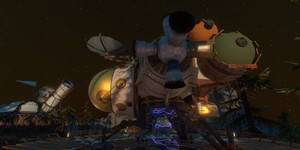





Want to comment? Please log in.